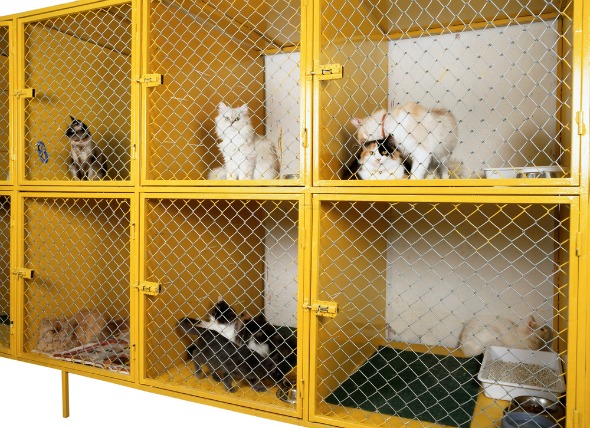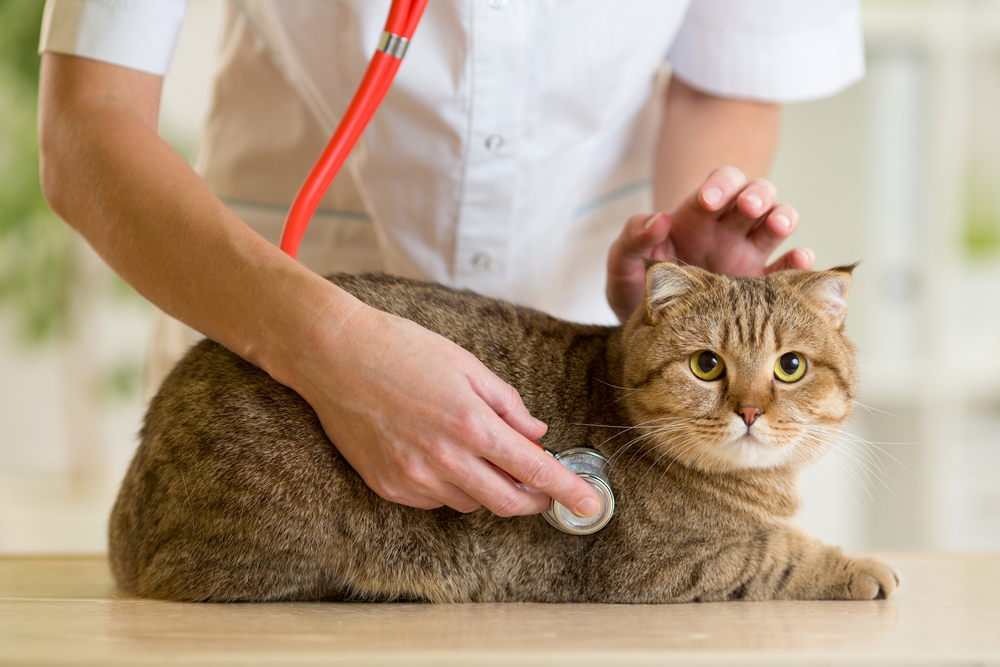
The condition of hyperkalemia is expressed by markedly higher than normal concentrations of potassium in the blood. Normally eliminated in the kidneys, potassium and its increased acidity in the cat's blood can have a
One of the causes of hyperkalemia has been linked to low potassium elimination from the body, which may be related to anuric (absence or defective excretion of urine) or oliguric (scanty urine production, renal failure) conditions. Also contributing are physical traumas such as urinary tract rupture or urethral obstruction, and some gastrointestinal diseases. In male cats it is not uncommon to find a concurrent lower urinary tract disease.
Additional causes include:
You will need to give a thorough history of your cat's health, onset of symptoms, and possible incidents that might have led to this condition. The history you provide may give your veterinarian clues as to which organs are being affected secondarily. A complete blood profile will be conducted, including a chemical blood profile, a complete blood count, and a urinalysis.
Diagnostic imaging will include radiographic contrast studies, which uses an injection of a radiopaque/radiocontrasting agent into the space to be viewed in order to improve visibility on X-ray. Ultrasound can also be used to rule out urinary tract rupture or obstruction of the urinary tract.
Because hyperkalemia can affect the blood's ability to flow normally, further affecting the heart's ability to function at full capacity, an electrocardiogram (ECG, or EKG) recording will be used to examine the electrical currents in the heart muscles, and may reveal any abnormalities in cardiac electrical conduction (which underlies the heart’s ability to contract/beat).
Treatment varies according to the underlying cause. Supportive measures will first focus on the symptoms, lowering potassium levels to normal blood levels, while pursuing a definitive diagnosis. Saline, given at 0.9 percent, is the fluid of choice for lowering potassium concentrations and blunting the effects of hyperkalemia on cardiac conduction.
If your cat is dehydrated or hypotensive (abnormally low blood pressure), fluids can be administered rapidly. Medications will be prescribed as appropriate by your veterinarian.
Your veterinarian will schedule follow-up exams for your cat to recheck potassium levels, which should be relative to the frequency dictated by the underlying disease. Your doctor will repeat ECG checks frequently until any rhythm disturbances are resolved.
 Rabies in Cats
Rabies is an inflammatory infection that specific
Rabies in Cats
Rabies is an inflammatory infection that specific
 Tritrichomonas foetus in Cats
Feline Tritrichomonas foetus Parasitic Infection
Tritrichomonas foetus in Cats
Feline Tritrichomonas foetus Parasitic Infection
 Low Body Temperature in Cats
Hypothermia in Cats
Hypothermia is a medical cond
Low Body Temperature in Cats
Hypothermia in Cats
Hypothermia is a medical cond
 Enlarged Spleen in Cats
Splenomegaly in Cats
Splenomegaly refers to the e
Enlarged Spleen in Cats
Splenomegaly in Cats
Splenomegaly refers to the e
 Can Cats Heal An Injury or Cure Illness?
A Cat Gives More Than it Receives &
Can Cats Heal An Injury or Cure Illness?
A Cat Gives More Than it Receives &
Copyright © 2005-2016 Pet Information All Rights Reserved
Contact us: www162date@outlook.com